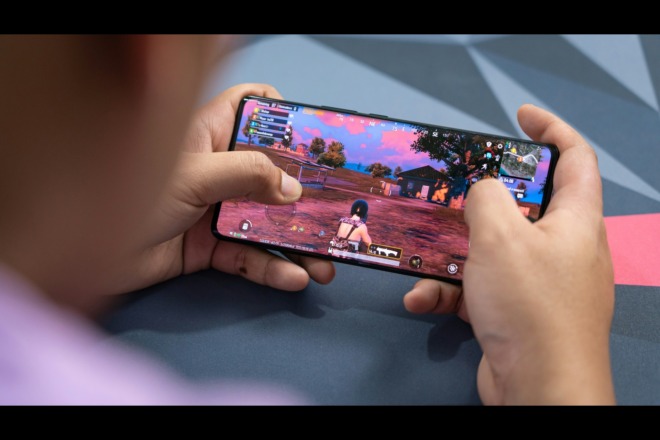Virtual reality (VR), digital environments that users can interact with in a realistic way using specialized equipment, is making quite a buzz in the tech world. Like most big tech innovations, VR is changing how business owners are conducting their operations.
Businesses around the world are beginning to adopt virtual reality technology to improve the experiences of their customers, employees and business partners. It’s already altering the business world, and it is likely to continue making big changes as time goes on.
According to Statista, the virtual reality consumer product market will grow from $6.2 billion to $16 billion by 2022. Everywhere you turn, virtual reality and augmented reality (AR) is part of life. If you shop for a new home, you might walk through a virtual tour where you are in control of which room you enter next. If you buy a couch, an app places the item in your living room so you can see exactly how it might look.
Rather than a fad for teens, VR has become more mainstream. As technology improves and device sizes reduce, expect even more integration with the way you do business.
VR Can Take You Anywhere
One of the most powerful capabilities of virtual reality hardware is that it can take you anywhere. At least, that’s what it feels like because the experience is so life-like. Not only does VR open up lifelike landscapes, but it also can create terrains not possible in the physical world.
Businesspeople cut down on travel for meetings and other events through VR. Unlike with today’s video conferencing, though, they will actually feel like they’re there, which can make these virtual business trips more productive.
Companies can also take their customers anywhere through the use of virtual reality. If you bring a VR headset to a trade show, you can invite people to walk through a digital version of your store without having to bring too many supplies with you. This will give people a better idea of what your company is all about.
This could be especially useful for travel agents who could take their clients to various destinations virtually before they decide where they want to go in real life. Imagine a carpenter putting cabinets into a home virtually and showing the owner different placement options and combinations.
A Look at the Future
Because you can create realistic virtual environments with VR technology, you can create things that don’t exist in the real world – but might soon. VR provides a more impressive way to show people your big idea or new prototype without spending tens of thousands on a model.
An architect, for example, could walk his client through his building design. Both parties will be able to get a clear idea of what the architect is proposing and can fine-tune the design based on what they experience. The client could interact with different features in the home and decide on what works and what doesn’t.
Similarly, an engineer who designs a new product could create a VR version of it through CAD instead of a physical model or prototype of the actual product. This allows them to explore the new design without actually using any physical resources. They can test it out in a virtual environment before making it in the physical world.
At the moment, most VR technology requires the use of a headset or special glasses. However, with advances in uses of AR through smartphones, expect this to change rapidly. The future of virtual reality may include the ability to interact without the use of a headset via smarter computers.
Immersive Marketing
VR also has noteworthy implications for marketing. VR can provide immersive experiences that showcase a new product. Perhaps even give a sneak peek into the inner workings of a company. And just let people have fun with an interactive, branded game.
Especially since VR is so new and exciting, immersive marketing is sure to create a buzz. People will want to tell their friends about it and share their experience on social media. The companies already using this new technology are seen as cutting-edge.
Virtual reality takes media to the next level by creating something that’s interactive and immersive. It allows companies to communicate with potential customers in ways that they never could before – and for customers to communicate with companies. You could give a virtual tour of your factory, for example, and invite people to ask questions within the VR experience.
Set up an immersive experience at a trade show or for your storefront. As users enter, they transport to a different world related to your product. Try to find something making sense to your industry. Bars are known for creating immersive events by transforming themselves into the set from a movie or animated series, for example. Create a theme night and invite the media and important customers.
Next-Level Training
Training simulations are more effective than ever when they utilize the capabilities of VR. They feel real, so they’re the next best thing to actually trying something out in person.
Doctors can try out surgeries before they actually do them. Pilots can practice flying. Mechanics can practice working on a car. Even Wal-Mart is using VR headsets to train employees to deal with the rushes that occur around holidays and clean up messes in store aisles.
When they use VR, employees may feel more prepared to take on what their job requires of them before they’re actually in the situation. Traditional training involved watching videos or listening to a speaker. However, studies show students retain more information when they are actively engaged in the learning process. Virtual reality takes a boring video and creates an environment where the user interacts with the screen, trying new skills until they’re perfected.
Enhanced Collaboration
Cloud-based software allows multiple people to work on the same document at the same time. This allows for improved collaboration, even when employees are physically in different places. Virtual reality can take this collaborative software to the next level.
In addition to working on documents, people can meet up with others anywhere in the virtual world, allowing them to work together on more complex projects. You can work with others to design new stores, office buildings, products and much more.
Companies that are remotely based can hold meetings even if their employees are spread out around the world to discuss company goals or work on projects. Although the process of hosting a VR meeting versus a basic Zoom gathering might seem cumbersome at first, the fun employees have with the process keeps them actively engaged and interacting with others.
Virtual reality, although it’s a relatively new technology, is already changing shifts in the way we do business. It allows workers to travel anywhere, meet up and test things out in a digital yet life-like environment.
Retail Shifts
More people shop online than in the past. Around 69% of Americans have shopped online. As people social distance and avoid brick-and-mortar stores, expect fast advances in the way we try out products before buying.
Retailers such as IKEA already offer the ability to download an app and place an item in your home. Expect VR to enter the scene, so you can walk through a showroom and try out different products, viewing them from 360-degree angles.
Virtual reality keeps online shoppers engaged and prevents them from bouncing away to a competitor’s site.
Virtual Changing Business Events
In the first half of 2020, many events were canceled due to the COVID-19 shutdowns. Trade shows, business meetings and even personal gatherings turned to companies such as Zoom and started hosting virtual events. Even political parties hosted their conventions virtually.
Just because your event is virtual doesn’t mean you can’t elevate it to seem more personal. Plan an amazing visual space for the cameras. Use lighting to give each speaker a studio-quality finish. You can even create networking opportunities and digital catalogs using VR.
People like to compare the current pandemic to the Spanish Flu of 1917 and 1918. However, today’s technology gives businesses an advantage they didn’t have 100 years ago. You have an opportunity to engage users and continue gatherings virtually in a way you couldn’t have done before satellite, smartphones and virtual reality.
Although it’s already having an impact, its influence is likely going to continue to grow and the technologies will likely continue to improve. The virtual world and the business world (and pretty much any other world, for that matter) may soon become synonymous.
About The Author
Cooper Adwin is the Assistant Editor of Designerly Magazine. With several years of experience as a social media manager for a design company, Cooper particularly enjoys focusing on social and design news and topics that help brands create a seamless social media presence. Outside of Designerly, you can find Cooper playing D&D with friends or curled up with his cat and a good book.


